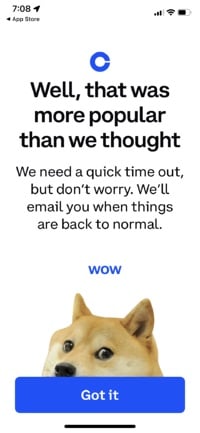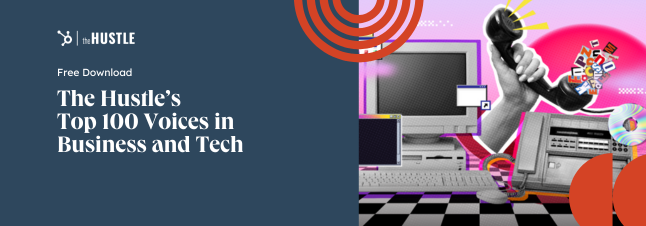6 Internet of Things Marketing Examples You Should Know About
IoT is everywhere nowadays – from the smart devices in our homes to the QR codes we see in commercials nowadays.
However, there is still so much untouched terrain with IoT marketing. Here are six IoT marketing examples to inspire you to investigate all the ways you can leverage this technology in your strategy.
How does IoT work in marketing?
The Internet of Things is the connection of everyday products like cars, alarm clocks, and lights to computing devices via the internet. It allows them to exchange data with each other, providing marketers with more context about their customers’ product usage.
This, in turn, enables marketers to deliver more relevant messages and leads to greater customer engagement.
For example, if you run out of milk or it spoils, a refrigerator connected to the internet could recognize your need and display a message on its screen or on your phone about the best milk deals in town. You could even order a carton through one of those devices if the refrigerator company partnered with a grocery store.
Since IoT technology connects the internet with objects that are ubiquitous in our daily lives, marketers in almost every industry will be able to engage consumers throughout every phase of the customer journey.
Internet of Things Marketing Examples
1. Coinbase’s Superbowl Ad
Every year, brands spend millions of dollars for a 15- to 60-second ad slot during the Superbowl.
When Coinbase, a cryptocurrency exchange platform, shared its commercial during the 2022 Superbowl, some viewers were confused while others were mesmerized.
Their one-minute ad featured a QR code bouncing around a black screen, reminescent of the “DVD” logo on older TVs – with eerie background music.
When viewers used placed their smartphone’s camera to the QR code, they were directed to the platform’s websites where they were offered $15 for signing up and downloading the app.
QR codes are considered gateways to IoT devices, and allow brands to find creative but affordable ways to market their products and services.
The commercial was so successful that the website crashed.
2. Heineken’s The Closer
In June 2022, beer company Heineken launched a campaign inspired by employees working from home following the pandemic and struggling to disconnect from work.
The company announced that on June 8, they would hold a giveaway sending consumers a Bluetooth-connected bottle opener that would shut down work apps when used.
Using IoT technology, the “Closer” would use an accelerometer to detect the opening of the bottle, communicate with the user’s device via Bluetooth, and shut down selected work apps.
In a press release, the brand’s global head of brand, Bram Westenbrink, shared that this device was created to address work-life imbalance.
“With the once-rigid boundaries between work and personal time rapidly deteriorating following the COVID-19 pandemic, we want to spark a much-needed conversation about the importance of resisting the societal pressures to be in a constant state of busy work and encourage workers around the world to reprioritize social and leisure time with the people who matter most.”
The giveaway only lasted one day and the second half of this campaign involved an online “Calendar Closer,” in which users schedule a meeting with up to three friends to receive $5 to spend on beer and an entry in another giveaway.
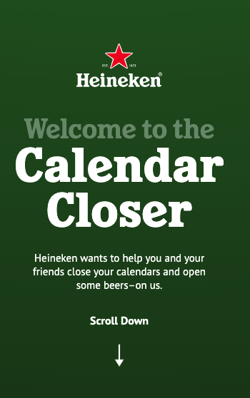
This multi-layered campaign shows just how creative brands can get in IoT marketing.
3. Walgreens’ IoT Ad Displays
In 2019, Walgreens started testing digital cooler doors that would target store goers with ads and partnered with brands like MillerCoors and Nestlé that were willing to test their products.
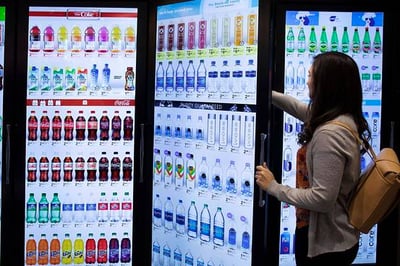
Here’s how it worked: Sensors and cameras located inside of the coolers would pair with face-detection technology to determine what to promote to shoppers, based on age, gender, weather, and more.
For instance, a young adult could be shown sodas while an older person could be shown beer. For beer company MillerCoors, this test seemed promising.
In a statement, a senior marketing manager at MillerCoors said that one of the biggest barriers they face is that shoppers don’t know they can purchase beers in drugstores. Having targeted ads like this could dramatically increase sales and provide more insight into consumer behavior.
This marketing strategy offered a unique opportunity to market to consumers right at the point of purchase, which is unheard of in an offline environment.
4. Diageo
In 2015, Diageo, a leader in the beverage alcohol industry and in IoT marketing, announced the launch of a smart bottle.
Here’s how it works: With every purchase of a Johnnie Walker Blue Label bottle, users would receive personalized messages to consumers who read the printed sensor tags using their smartphones.
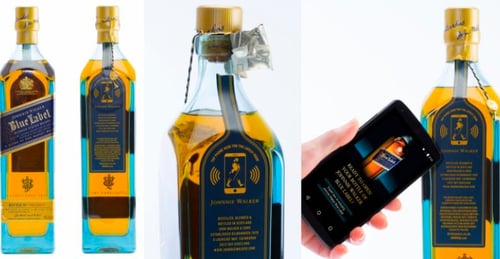
The brand said the goal was to enhance the consumer experience and make it easy to send targeted and timely marketing messages.
This is a fantastic example of how to elevate the relationship with a consumer after they’ve made the purchase. Often, brands focus their resources so much on gaining customers that they don’t consider post-purchase marketing strategies.
5. Allen Solly
It’s not unusual for brands to ask customers to tweet something, but the request is not often met with much excitement or vigor unless the customer feels he’s receiving something in return.
Using IoT, connecting social media hashtags and product giveaways might be easier than ever – and a lot more fun.
Allen Solly, a clothing brand, created an interactive shirt billboard in Bangalore, India.
As users tweeted #RainingSolly, the computer linked to the billboard would choose a solenoid (the coil wound behind a shirt) to push a shirt off the billboard for a random consumer to win.
Allen Solly found a unique way to encourage consumers to share their brand on social media, while enabling people to engage as a community in person, as well.
6. Nivea
Print advertisements and IoT technology probably feel like two different ends of the marketing spectrum – the past, and the future. But they might not be.
Nivea Sun Kids created a campaign that combines both, by offering bracelet strips in a Brazil magazine print advertisement that parents could peel off and put on their children’s wrists.
The bracelets had built-in locators, which, when paired with Nivea’s mobile app, allowed parents to set a maximum distance their children could wander. If the child wandered beyond the maximum distance, the app notified the parent. The radar also showed if the child was moving closer or further away.
Nivea’s creative campaign likely encouraged word-of-mouth advertising between parents in Brazil, and it also showcased the brand as being thoughtful and innovative.
We’ve only scratched the surface when it comes to IoT marketing. While some tactics require more resources than others, there are a lot of affordable and creative methods brands can use to incorporate IoT into their marketing strategy.
Editor’s Note: This post was originally published in July 2018 and has been updated for comprehensiveness.
![]()



